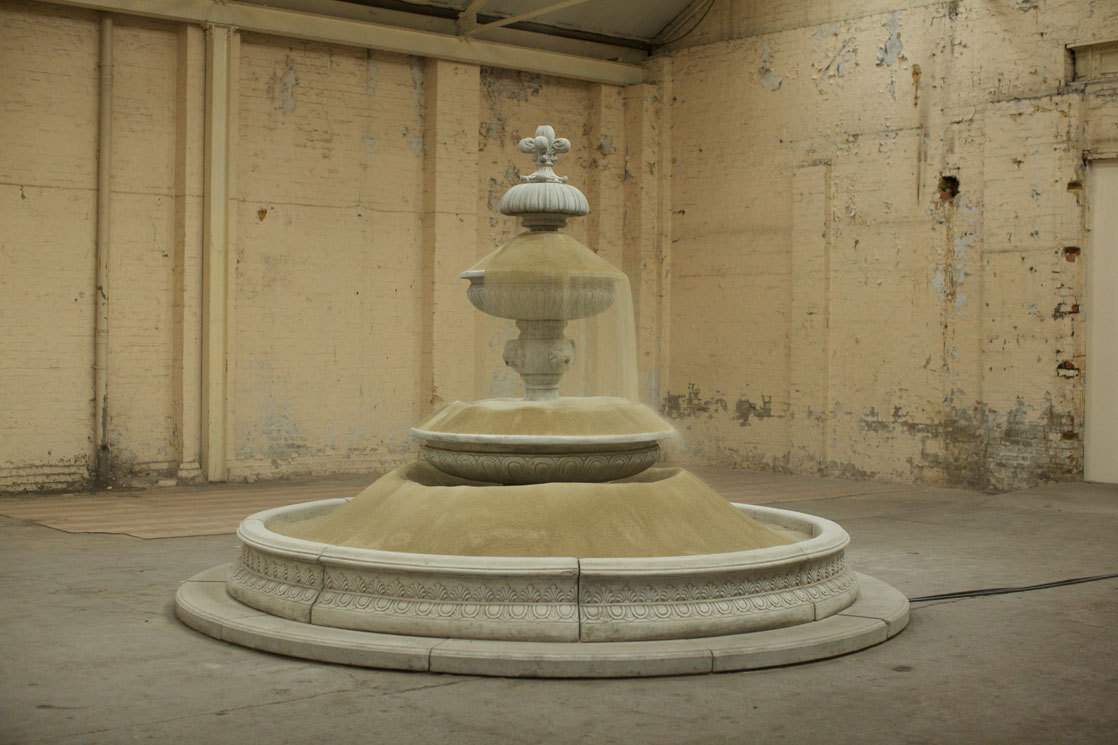 |
| Klaus Weber Sand Fountain (2012) |
Klaus Weber's piece Sand Fountain is both transformative and oppositional – encouraging a reconsideration (among other things) of what a fluid is, even if water is wet and sand is dry – if one can be substituted by the other then what exactly is the difference?
The falsification criteria that Malte spoke about is also concerned with being oppositional, exploring where our theories and ideas about the world break down and where they hold their own.
– Jennifer








